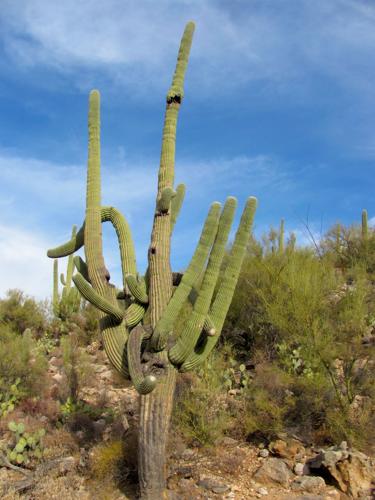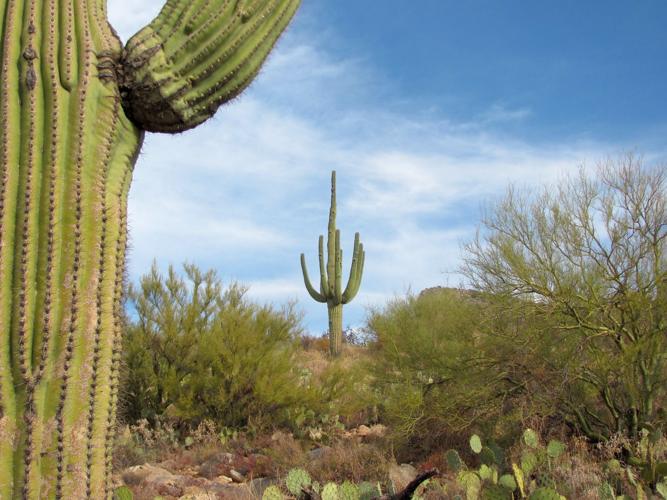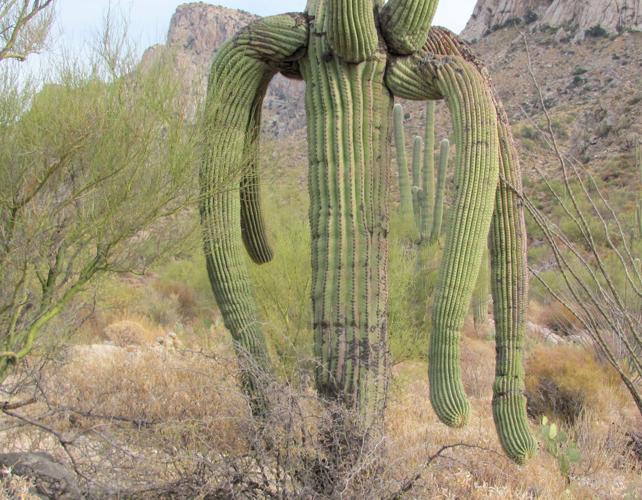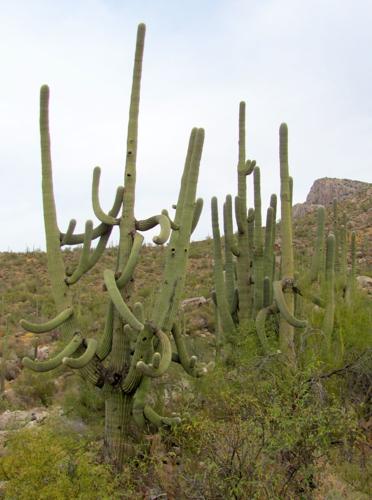Saguaro National Park might be the premier destination for admirers of the iconic cactus — but for a look at some wonderfully eccentric specimens, you might try a hike on the Linda Vista Trail north of Tucson.
Large saguaros with bizarrely tangled arms stand out in several places along the trail.
One big cactus, dubbed the “pooped out saguaro” by some hikers, has its four main arms drooping to the ground rather than standing tall.
Elsewhere along a 2.39-mile loop route, those who prefer traditional saguaro splendor will find plenty of grand specimens.
UNUSUAL GROWTH CAUSES
Scientists at Saguaro Park said they can’t say for certain what causes the unusual growth patterns in some saguaros.
Several books, including “Ecology of the Saguaro” by Warren F. Steenbergh and Charles H. Lowe, suggest that frost damage might be to blame for drooping arms and other irregularities.
That’s a possibility, said Don Swann, biologist with the park.
“But I don’t know of any direct evidence that this occurs as a result of freezing,” Swann said. “I have a hunch that this drooping seems to have mostly occurred quite awhile ago in the past because I typically only see it on what appear to be large and old saguaros.
“Although we have not formally studied this, I don’t believe I’ve seen any drooping arms on saguaros in the park as a result of the really severe freeze of 2011, which caused extensive tissue damage and a large number of deaths of older saguaros.”
Perry Grissom, restoration ecologist with the park, added that genetic abnormalities could be a factor in unusual growth patterns.
“Odd growth could also be caused by woodpecker excavation, wind damage, lightning, or a neighboring saguaro that fell decades ago,” Grissom said.
OTHER SITES
The Linda Vista Trail isn’t the only place to find saguaros with very unusual shapes, of course.
Almost any expanse of the big cacti at Saguaro National Park’s units east and west of Tucson will include some eye-catching anomalies.
Among the most striking of eccentric specimens are crested saguaros — rare, odd-looking cacti with crested or fan-shaped tops. An excellent example grows along the short Bajada Loop Nature Trail at Sabino Canyon northeast of Tucson.
Scientists have suggested several possible causes for crested saguaros ranging from genetic abnormalities to damage from frost or animals.







